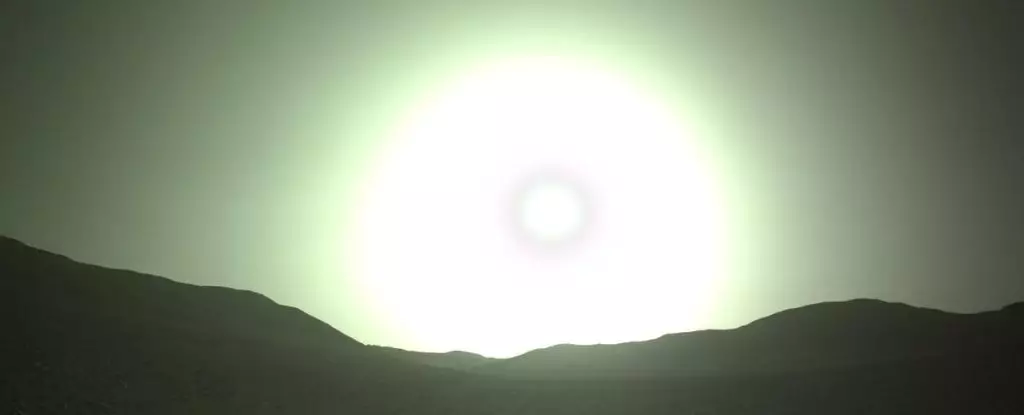On July 4, 2023, the Perseverance Rover commemorated its 842nd Martian day on Mars by capturing a breathtaking image of the Martian sunset. The picture revealed a mesmerizing sight as the red sky faded into darkness, enveloping the horizon with an ethereal blue glow. This otherworldly spectacle is a stark contrast to the sunsets we experience here on Earth. The Martian sunset is a testament to the unique characteristics of the Red Planet and its distinct atmosphere.
Mars and Earth differ significantly when it comes to their proximity to the Sun and the amount of sunlight they receive. Mars is farther from the Sun than Earth, which means that the intensity of sunlight reaching Mars is considerably weaker. In fact, Mars receives less than half the amount of sunlight that our planet does. Additionally, Mars possesses only a fraction of the Earth’s atmosphere, predominantly composed of carbon dioxide, with trace amounts of nitrogen and oxygen. This contrasting atmosphere leads to different interactions between sunlight and the atmospheres of the two planets.
Earth’s atmosphere plays a crucial role in the coloration of our sky. When sunlight enters Earth’s atmosphere, it interacts with various atmospheric components such as oxygen and nitrogen. This interaction scatters blue light across the sky, giving our planet its distinct blue hue during the day. As the Sun rises or sets, the light has to pass through a greater thickness of atmosphere, leading to the scattering of shorter blue and violet wavelengths. Consequently, the remaining light that reaches our eyes predominantly consists of oranges and reds, creating the warm palette of colors during sunrise and sunset.
On the other hand, Mars presents an entirely different atmospheric scenario. Sunlight on Mars interacts with iron-rich dust particles suspended in its atmosphere. The fine dust scatters lower-frequency red light, resulting in a sky tinged with hues of red during the day. However, during twilight, the shorter-wavelength red light is filtered away, revealing a cool blue glow across the Martian sky. This unique atmospheric composition and interaction with sunlight give rise to the stunningly alien sunsets experienced on the Red Planet.
One of the most fascinating aspects of Mars’ twilight is the persistence of the bluish haze long after the sunset or before the sunrise. This extended twilight period offers researchers a prime opportunity to study the Martian atmosphere. Photos captured during this time provide valuable insights into the composition of Mars’ atmosphere, aiding in the identification and analysis of dust and ice clouds. By examining color transitions in these images, scientists can observe changes in particle size and track the evolution of these atmospheric phenomena over time.
Earlier this year, the Curiosity rover delivered an awe-inspiring image of the Sun’s rays piercing through the twilight clouds of the Martian sky. The clarity of this image far surpassed any previous observations, enabling atmospheric scientists to glean detailed information about cloud formation and particle dynamics. Such discoveries deepen our understanding of the complex atmospheric processes taking place on Mars.
A Continual Source of Wonder
Throughout the past two decades, the Curiosity, Perseverance, Spirit, and Opportunity rovers have gifted us with countless mesmerizing images of Martian sunsets. Each photo serves as a reminder of the undeniable beauty and mystery that envelops the Red Planet. These captivating sunsets never fail to awe and inspire, serving as a poignant reminder of the vast diversity and boundless enchantment of our universe.


Leave a Reply